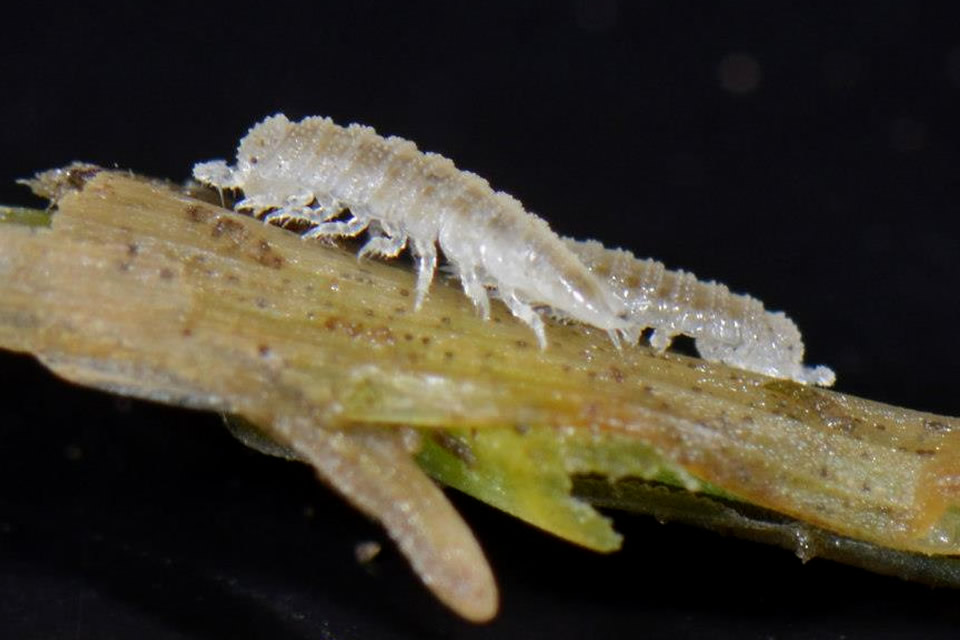Miktoniscus patiencei Vandel, 1946
Common name
Status:
- GB IUCN status: Least Concern
- GB rarity status: Nationally Scarce
ID Difficulty
Identification
The pygmy woodlice of family Trichoniscidae (and Styloniscidae) are readily distinguished from other woodlice by the shape of the antennal fagellum which comprises a tapered cone (of indistinct segments) bearing a terminal bristle. All trichoniscids, except Haplophthalmus spp., have a stepped body outline.
Miktoniscus patiencei is a small off-white coastal woodlouse reaching 4mm body length. The eye consists of a prominent single black ocellus, its colour retained in alcohol, and the entire body is covered in coarse spiny tubercles.
The coastal Trichoniscoides saeroeensis is of similar appearence, but has reddish/orange ocelli, which rapidly lose their colour in alcohol, and the dorsal surface is less coarsely tuberculate.
Distribution
Although never common, Miktoniscus patiencei occurs widely along the southern coasts of England and Ireland with outlying populations as far north as eastern Scotland.
Habitat
It is exclusively coastal, primarily associated with pockets of damp friable peaty soil occurring in supralittoral habitats, such as salt marsh, sparsely vegetated shingle banks, erosion banks and at the base of sea cliffs. It is frequently found associated with other soil-dwelling trichoniscids, such as Trichoniscoides saeroeensis and Trichoniscus pygmaeus.
This summary is based on the detailed account in Gregory (2009).
References
Gregory, S. (2009) Woodlice and Waterlice (Isopoda: Oniscidea & Asellota) in Britain and Ireland. Field Studies Council/Centre for Ecology & Hydrology.
Links
World List of Marine, Freshwater and Terrestrial Isopod Crustaceans: https://www.marinespecies.org/isopoda/aphia.php?p=taxdetails&id=261279






